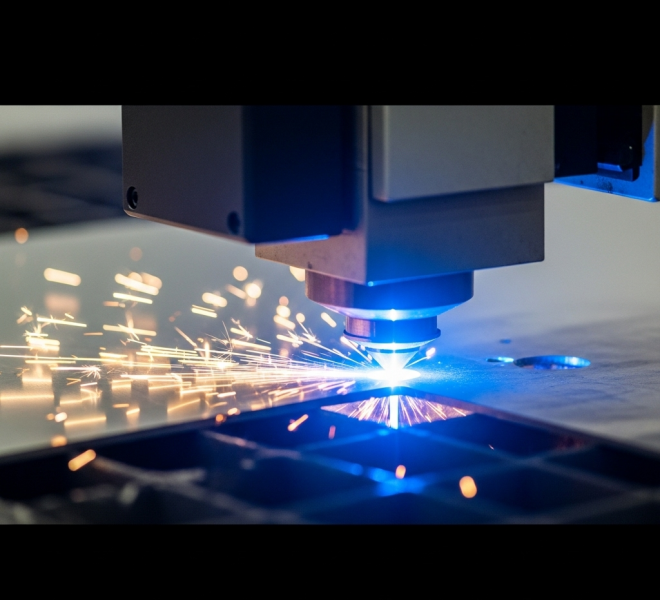
Key Applications & Technical Details:High-Power Fiber Laser Assisting
·Stainless Steel: Requires high-purity nitrogen, typically 99.99% to 99.999%, delivered at a high pressure of 16-25 bar. The nitrogen jet serves three critical functions:
1.Cooling Effect: Rapidly cools the cut edges, preventing over-burning and minimizing the heat-affected zone (HAZ).
2.Ejection Effect: The powerful kinetic energy forcefully blows the molten metal dross out from the bottom of the kerf, resulting in a clean, slag-free cut.
3.Shielding Effect: Creates an inert atmosphere that completely prevents the high-temperature cut surface from reacting with oxygen, ensuring a bright, mirror-like finish that requires no secondary processing and is ready for welding.
·Aluminum, Copper & High-Reflective Materials: These materials also demand high-purity, high-pressure nitrogen. The cooling effect is especially crucial here to control heat input, reduce material deformation, and achieve a high-quality cut edge.
·High-Speed Cutting of Thin Carbon Steel: When the goal is maximum cutting speed and the smoothest possible finish, nitrogen is often preferred over oxygen even for carbon steel, as it produces a significantly cleaner, oxide-free edge.
Key Technical Considerations for Nitrogen Generation Systems
When selecting a PSA nitrogen generation system for the demanding application of laser cutting, it is crucial to look beyond basic purity and flow specifications. Two core technical details determine the long-term reliability and cut-quality consistency of the system:
1. Pressure & Flow Stability:
The frequent start-stop cycles of a modern laser head create intense fluctuations in gas demand. A superior system must be equipped with sophisticated pressure boosting and flow regulation technology to ensure the pressure delivered to the cutting nozzle remains perfectly stable at the set point, regardless of operational changes. This minute difference in pressure stability is what separates an "acceptable" cut from a "perfect" one.
2. Physical Durability of the Core Adsorbent:
The continuous high-pressure gas flow is a severe test for the system's heart—the Carbon Molecular Sieve (CMS). If the CMS lacks physical strength or is not packed densely enough within the adsorption towers, the long-term gas impacts can cause the pellets to move, abrade, and eventually pulverize. This resulting dust can clog valves, contaminate the gas stream, and lead to a premature and catastrophic failure of the system's core.
Therefore, leading system solutions address this challenge on two levels:
·First, by utilizing a meticulously screened, high-mechanical-strength "Low-Dust" Carbon Molecular Sieve.
·Second, by employing advanced "Vacuum Filling" technology instead of traditional "blizzard" filling methods. Vacuum filling densely and uniformly packs the CMS into the towers, leaving virtually no space for movement or friction, thus eliminating the root cause of pulverization.